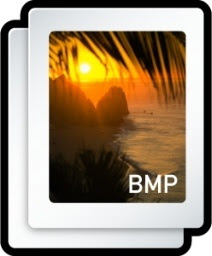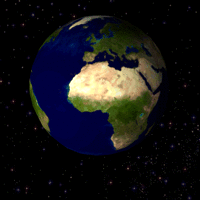Format:
The way in which something is arranged or set out.
Image format:
Organizing and storing digital images.
How image data will be stored:
Uncompressed, Compressed, Vector formats.
Types of image formats:
Types of image formats:
JPG / JPEG:
Joint Photographic Expert Group (jay-peg).
Extension is .jpg or .jpeg
Files are lossy.
Much information is lost from original file.
Look difference especially detailed edges of flower petals.
Is there any difference between JPG / JPEG:
No, there is no difference between JPG and JPEG.
Lot of window users utilize it very frequently.
In windows operating system all files are required to have a three letter file extension.
Pros:
Compatible in most operating system like Mac, Linux.
Widely accepted image format.
Cons:
Discard a lot of data.
Cannot be animated.
Not support transparency.
Does not support transparent backgrounds.
GIF:
Graphic Interchange Format.
Extension is .gif
Multiple patterns in to one.
Image size is relatively small when compared to other images.
Pros:
Can support transparency.
Can do small animation effects.
Cons:
Supports 256 colors.
Oldest format in web.
Some times file size is larger than PNG.
BMP:
Bitmap image.
Extension is .bmp
Also called as raster or paint images.
Contains millions of pixels.

Pros:
Works well with OS.
Use as windows wall paper.
Cons:
Files are uncompressed.
Huge images files not web friendly.
TIFF:
Tagged Information Format File.
Extension is .tif
Desktop publishing.
Keep TIFF copy of original photos.
Using on web change to JPG.
Pros:
Flexible format.
Supports compression or no compression.
High quality image, data information are stored.
Cons:
Huge disk space consumption.
Slow loading time.
PPM, PGM, PBM and PNM:
Poratable pix map.
Portable gray map.
Portable bit map.
Net pbm format.
HEIF:
High efficiency image format.
BPG:
Better portable graphics.
Replace to JPEG image format or quality.
Webp:
Image format uses both lossless and lossy compressions.
Google designed this to reduce images speed up web page loading.
PNG:
Portable Network Graphics.
Designed for web.
Support 8-bit transparency.
In computers screenshots automatically save as PNG.
Pros:
Does not loose quality.
Superior version of GIF.
Small files than GIF.
Cons:
Cannot be animated.
Not all web browsers support PNG format.
Joint Photographic Expert Group (jay-peg).
Extension is .jpg or .jpeg
Files are lossy.
Much information is lost from original file.
Look difference especially detailed edges of flower petals.
Is there any difference between JPG / JPEG:
No, there is no difference between JPG and JPEG.
Lot of window users utilize it very frequently.
In windows operating system all files are required to have a three letter file extension.
Pros:
Compatible in most operating system like Mac, Linux.
Widely accepted image format.
Cons:
Discard a lot of data.
Cannot be animated.
Not support transparency.
Does not support transparent backgrounds.
GIF:
Graphic Interchange Format.
Extension is .gif
Multiple patterns in to one.
Image size is relatively small when compared to other images.
Can support transparency.
Can do small animation effects.
Cons:
Supports 256 colors.
Oldest format in web.
Some times file size is larger than PNG.
BMP:
Bitmap image.
Extension is .bmp
Also called as raster or paint images.
Contains millions of pixels.

Pros:
Works well with OS.
Use as windows wall paper.
Cons:
Files are uncompressed.
Huge images files not web friendly.
TIFF:
Tagged Information Format File.
Extension is .tif
Desktop publishing.
Keep TIFF copy of original photos.
Using on web change to JPG.
Pros:
Flexible format.
Supports compression or no compression.
High quality image, data information are stored.
Cons:
Huge disk space consumption.
Slow loading time.
PPM, PGM, PBM and PNM:
Poratable pix map.
Portable gray map.
Portable bit map.
Net pbm format.
HEIF:
High efficiency image format.
BPG:
Better portable graphics.
Replace to JPEG image format or quality.
Webp:
Image format uses both lossless and lossy compressions.
Google designed this to reduce images speed up web page loading.
PNG:
Portable Network Graphics.
Designed for web.
Support 8-bit transparency.
In computers screenshots automatically save as PNG.
Pros:
Does not loose quality.
Superior version of GIF.
Small files than GIF.
Cons:
Cannot be animated.
Not all web browsers support PNG format.
What is image compression:
Minimising the size in bytes of a graphic file with out degrading the quality of image to unacceptable level.
Minimising the size in bytes of a graphic file with out degrading the quality of image to unacceptable level.
Types of image file compression:
Lossless:
Lossless:
Allows original data to be perfectly reconstructed from the compressed data.
Lossy:
Lossy:
Irreversible compresssion.
Reduced data size for storage, handling and transmitting content.
Why do we compress images:
Fairly small file size for the quality that it displays.
How do compressed file work:
No information is lost.
Win zip are based on lossless compression.
Redundant information compress (zip) file.
Restores it uncompress (unzip) file.
When to use which format:
Use JPG for photos.
Use GIF for simple drawings, an image and transparent background.
Use PNG for screenshots automatically computers save it as PNG.
How do i change PNG to JPG format:
Why do we compress images:
Fairly small file size for the quality that it displays.
How do compressed file work:
No information is lost.
Win zip are based on lossless compression.
Redundant information compress (zip) file.
Restores it uncompress (unzip) file.
When to use which format:
Use JPG for photos.
Use GIF for simple drawings, an image and transparent background.
Use PNG for screenshots automatically computers save it as PNG.
How do i change PNG to JPG format:








